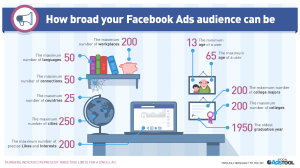 Building and maintaining an e-commerce store reaps a wealth of benefits in this digital age, the most obvious of which is the fact that you do not have the same expense or logistical input required by a traditional bricks and mortar store. However there are tips and techniques you can apply to ensure your e-commerce project does not disappoint you. Let’s take a look at them.
Building and maintaining an e-commerce store reaps a wealth of benefits in this digital age, the most obvious of which is the fact that you do not have the same expense or logistical input required by a traditional bricks and mortar store. However there are tips and techniques you can apply to ensure your e-commerce project does not disappoint you. Let’s take a look at them.
Prioritizing The User Experience
To sell to people, you need to make the entire experience as simple as possible. If it’s hard work to figure out or annoying to register you’re likely to lose online shoppers. An expert writing for Mashable says:
“To really engage with customers, you have to appeal to the emotional side of your users,” says Andres Teran, co-founder of Toplist, a social shopping recommendation platform. “More than the age or the city you want to target, it’s important to look for people who share feelings and behaviors towards something.”
If you’re not sure how to rate the experience, ask yourself if it is something you could use. Ask friends and family members to rate the experience. Test out new ideas and figure out what gets the best results.
Address Your Customer’s Concerns
If you bring a first time shopper to your site, someone who has not heard of your brand before, he or she maybe a bit more skeptical and may want to do some more research before he actually buys. To stop him from hitting the back button or visiting a competitor site, display your telephone number and physical address (if applicable) to show there are other ways to get hold of you.
Site security is probably another concern that some shoppers will have so ensure the information related to your systems is also easy to see.
The other big concern for online shopping is the issue of returns and refunds. In order to offer a high level of customer service it is important that you are open to returns or refunds. Refunds can be problematic because you will incur additional charges if the client pays by credit card. As a compromise you could offer a return, excluding the bank charges and cost of shipping.
Pay Attention To Customer Feedback
If you want to create a platform that people will use, you need to listen to their suggestions, too. Customer feedback is essential for all businesses but it is even more important for small and medium sized companies that rely on word of mouth referrals and leads.
Don’t Neglect Your Social Media Channels
Social media channels are other avenues through which to redirect traffic to your e-commerce store. Social media networks that are graphics-oriented, like Instagram, Pinterest and Facebook can do wonders for word of mouth referrals. Social media platforms also provide the foundation for you to launch a new e-commerce store, giving you instant access to large audiences and real time communications channels.
A Flexible Pricing Structure
The bigger the market you sell to, the more conscious you should be of pricing. If you are selling to international or out of state customers, you would also need to take shipping costs into account.
And, to create a really convenient online store it is more considerate for you to trade in all the country currencies you intend to sell to. Using one standard currency can get confusing for your online shoppers, and can result in empty shopping carts because of “e-commerce friction”. In order to make a sale you should generate as little friction as possible, and focus on making the order and payment processes smooth and streamlined.
Use Psychologically Appealing Pricing
Using round numbers can make a major difference to sway shoppers’ decisions when it comes to making a purchase. Odd numbers and extra cents can also contribute to ecommerce friction, so opt instead for clean, rounded figures that won’t cause your buyer to think twice.
Your Payment Methods
One of the obstacles for e-commerce sites is addressing shoppers’ concerns about online security. If you ask them to make payments using methods they aren’t familiar with, it can make them very uncomfortable:
Asking your online customers to pay in a way they are not accustomed can make them suspicious and creates friction to purchase that will cut into your revenue. You can make them feel at home by working with what they know.
Not all customers have credit cards so you might need to think about different options. Credit cards can also be expensive to process so you might not want all your sales to be transacted this way, unless you built the additional costs into your pricing structure. Could you allow deposits to be made? What about a platform like Paypal?
Make The Site Easy To Search
Help online customers find what they need quickly and easily by making your search bar accessible from anywhere on the site:
Make your search bar omnipresent. Make it unashamedly tag along the visitors as they explore the hidden corners of your homepage. If they are at the bottom of your page, don’t make them scroll all the way up to find the search box. Feed them with a spoon.
Of course, the better you can organize your navigation bar, the easier you make it for people to find the products they are searching for. If your store sells clothing, break it up into gender and ages. If you sell furniture online categorize your navigation bar according to the rooms of the home. Think like your ideal customer and how you would go about locating the products you want. Also consider that one of the biggest contributors to high bounce rates on ecommerce sites is bad navigation. If a user sees and clicks one of your ads and lands on your site, no knowing your brand at all, how easy is it really for them to navigate around?
Ultimately, to make your site work, it’s more than just laying products out on a webpage. Approach the build from your client’s point of view, and you will see an improvement in your conversion rate.



 With updates being made to Facebook all the time, even the most seasoned users need to brush up on their skills. Here are the latest tips for Facebook marketing and how to cope with Edge Rank.
With updates being made to Facebook all the time, even the most seasoned users need to brush up on their skills. Here are the latest tips for Facebook marketing and how to cope with Edge Rank.
 Amazon offers a very wide, captive audience to retailers that want to sell products around the world.
Amazon offers a very wide, captive audience to retailers that want to sell products around the world. 
 Whether you’re just starting out, or looking to expand, you probably want to get more sales. Social media, referral websites and online listings all give you a chance to widen your exposure, but often it’s not about brand awareness so much as applying winning tactics to convince a buyer to take up your product. The Internet provides many avenues for us to reach audiences, but you need to have a good grasp of the different tools available to you.
Whether you’re just starting out, or looking to expand, you probably want to get more sales. Social media, referral websites and online listings all give you a chance to widen your exposure, but often it’s not about brand awareness so much as applying winning tactics to convince a buyer to take up your product. The Internet provides many avenues for us to reach audiences, but you need to have a good grasp of the different tools available to you.
 With any form of online advertising you must follow certain rules to increase your ROI. It doesn’t matter how much you spend on advertising, the bottom line is that if you aren’t getting a good return then you need to change things up. Facebook advertising is one of the many ways that online companies nowadays market their businesses. You too can make use of this marketing channel, and here are some tips that must be used to prevent your spending from getting out of control.
With any form of online advertising you must follow certain rules to increase your ROI. It doesn’t matter how much you spend on advertising, the bottom line is that if you aren’t getting a good return then you need to change things up. Facebook advertising is one of the many ways that online companies nowadays market their businesses. You too can make use of this marketing channel, and here are some tips that must be used to prevent your spending from getting out of control.